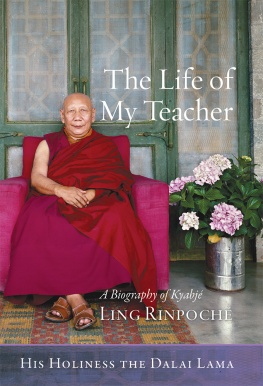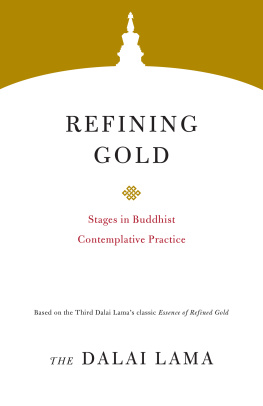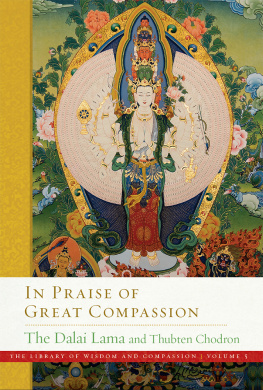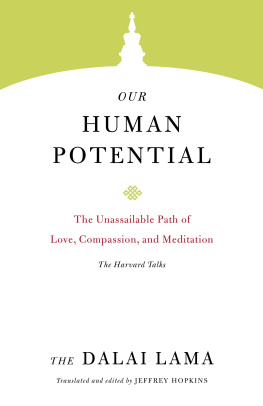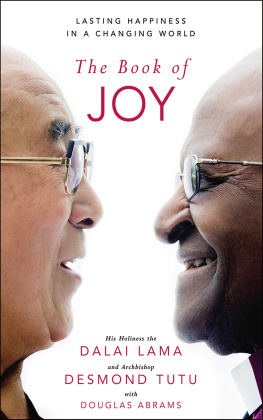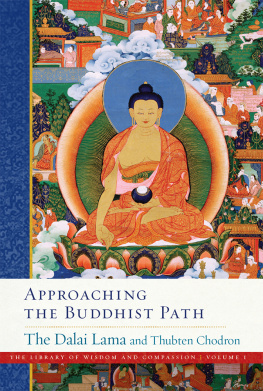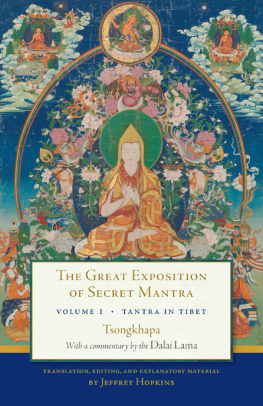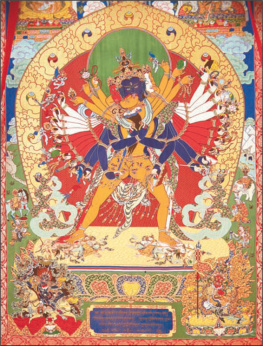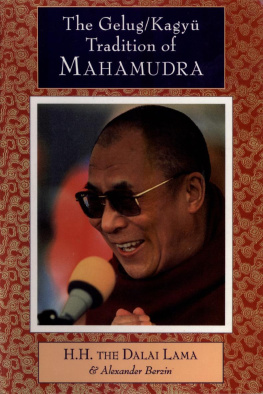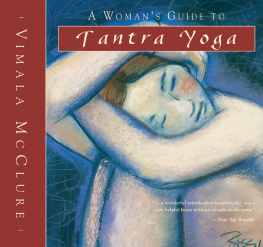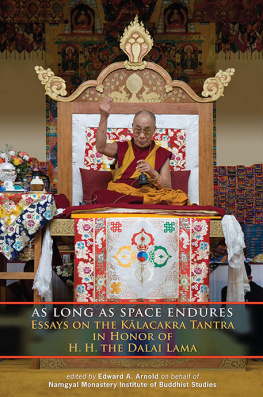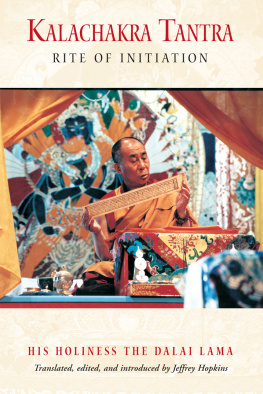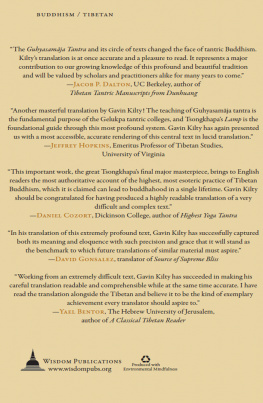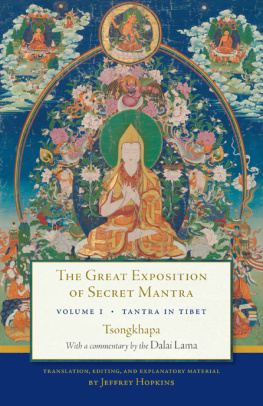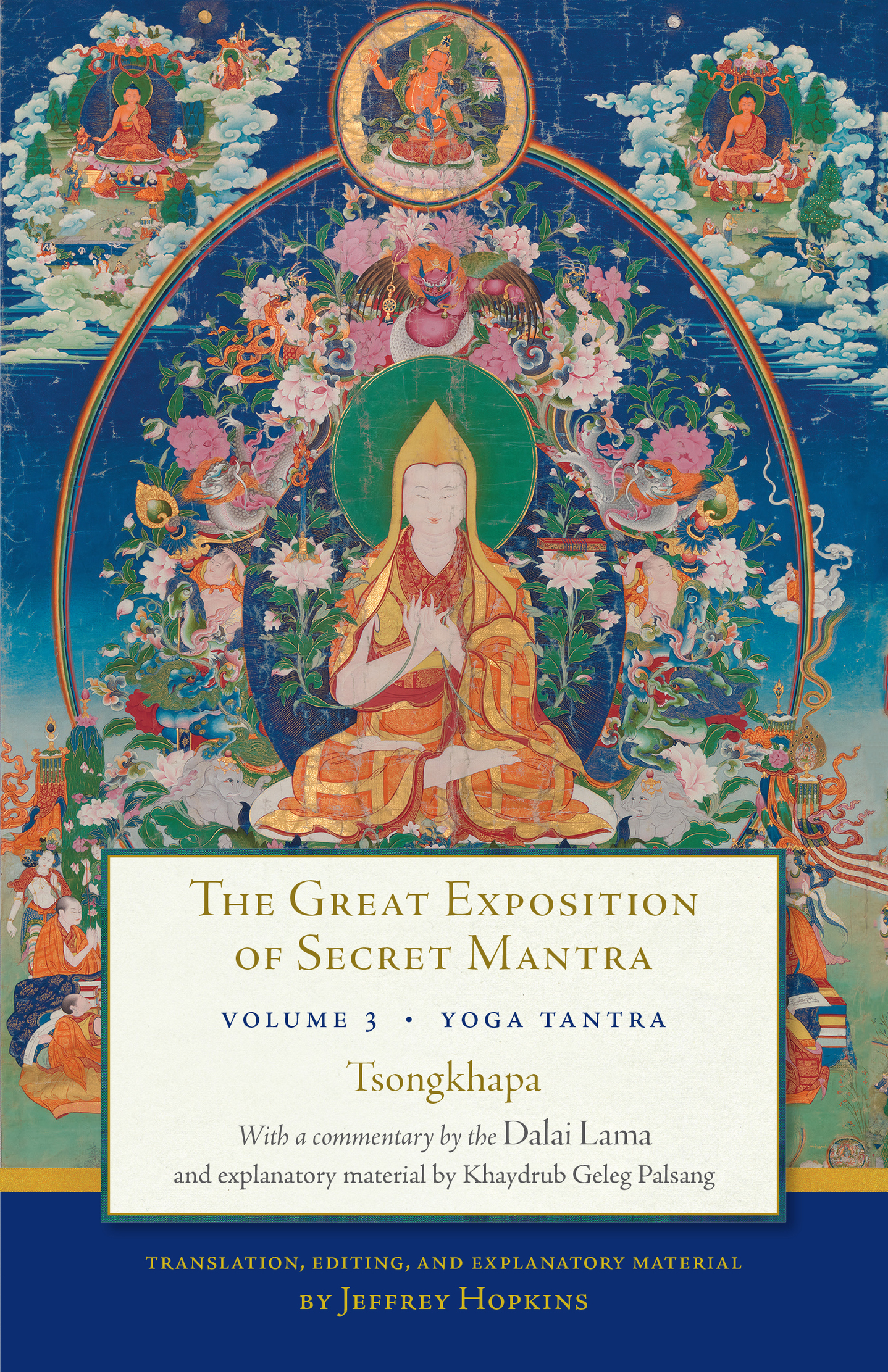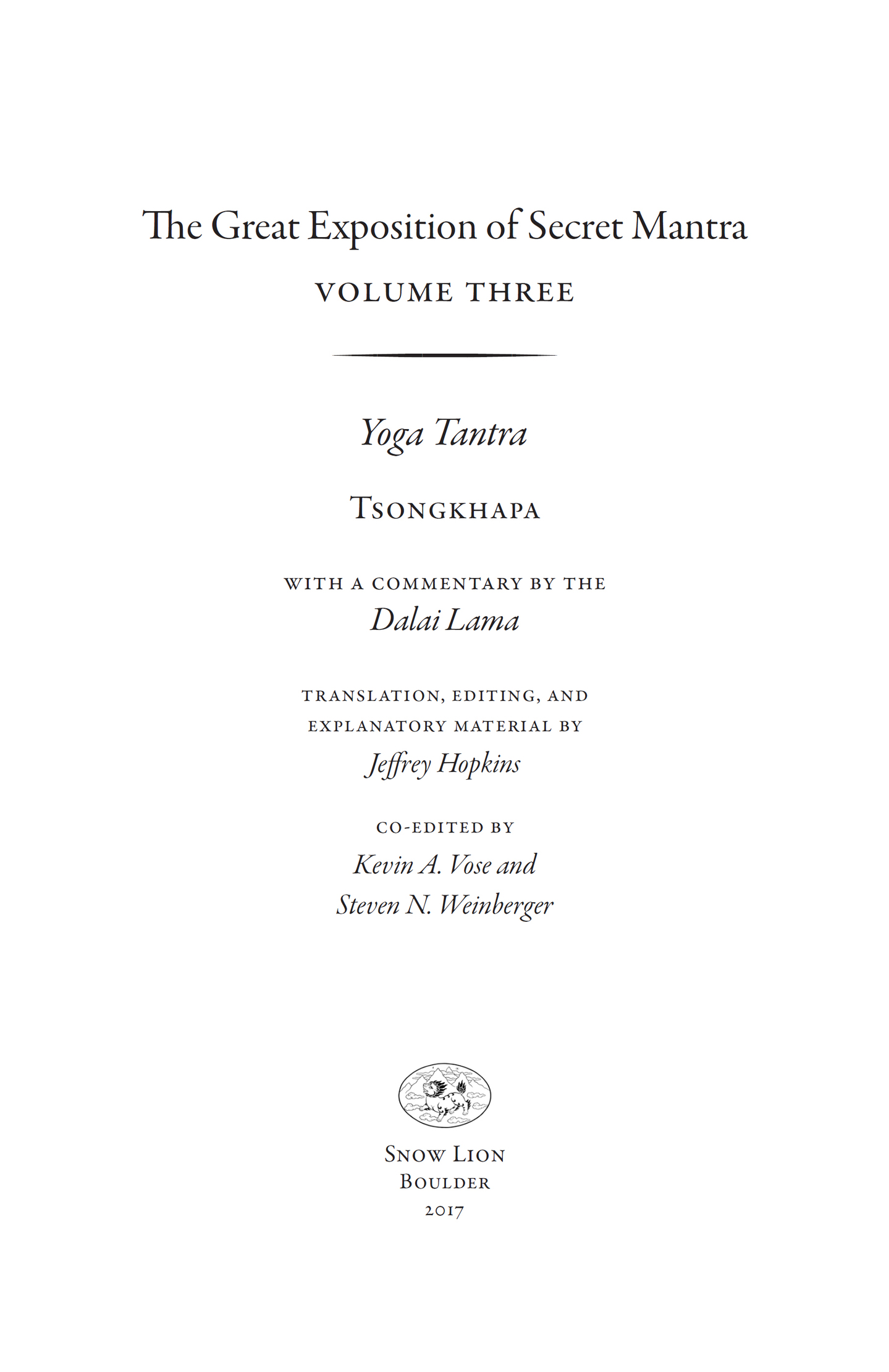This book on Yoga Tantra is the third in a series presenting The Stages of the Path to a Victor and Pervasive Master, a Great Vajradhara: Revealing All Secret Essentials of Tibet. By way of introducing the present book, let us briefly consider Tsongkhapas procedure in the first two volumes.
T ANTRA IN T IBET
Tsongkhapas text begins the Perfection Vehicle as it is commonly called:
Tripiakamla and commentator Vajrapifour differences
Jnashreleven differences
Ratnkarashntithree differences
Indrabhtiseven differences
Jnapdathree differences
ombhiherukafive differences
Vajraghaapdafour differences
Samayavajrafive differences.
In a radical departure from Butns catalog of opinions, Tsongkhapa analyzes the structure of the path to Buddhahood and analytically chooses to emphasize a single central distinctive feature of the Mantra Vehicle, deity yoga. The main points he makes in distinguishing the Lesser Vehicle and the Great Vehicle and, within the latter, the Stra and Mantra forms, are:
The difference between vehicles must lie in the sense of vehicle as that to which one progresses or as that by which one progresses.
The Lesser Vehicle differs from the Great Vehicle in both. The destination of the lower one is the state of a Hearer or Solitary Realizer Foe Destroyer and of the higher one, Buddhahood.
Concerning vehicle in the sense of means by which one progresses, although there is no difference in the wisdom realizing emptiness, there is a difference in methodLesser Vehicle not having and Great Vehicle having the altruistic intention to become enlightened and its attendant deeds.
Stra and Mantra Great Vehicle do not differ in terms of the goal, the state being sought, since both seek the highest enlightenment of a Buddha, but there is a difference in the means of progress, again not in wisdom but in method.
Within method, Stra and Mantra Great Vehicle differ not in the basis or motivation, the altruistic intention to become enlightened, nor in having the perfections as deeds, but in the additional technique of deity yoga. A deity is a supramundane being who himself or herself is a manifestation of compassion and wisdom. Thus, in the special practice of deity yoga one joins ones own body, speech, mind, and activities with the exalted body, speech, mind, and activities of a supramundane being, manifesting on the path a similitude of the state of the effect.
As scriptural authority for the central distinguishing feature between the Stra and Mantra Great Vehicles, Tsongkhapa quotes a passage from the
Despite for instance, not because they differ from the aforementioned sources but because their presentations fail in terms of consistency with the path structure. By doing so, he moves the basis of the presentation from scriptural citation to reasoned analysis of a meditative structure.
Also, whereas Butn catalogs nine ways that Indian scholaryogis differentiate the four tantra setsby way of the four Indian castes, four schools of tenets, four faces of Klachakra, four periods of the day, four eras, followers of four deities, four afflictive emotions to be abandoned, four levels of desire to be purified, and four levels of facultiesTsongkhapa critically examines most of these, accepting only the last two, with modification. He differentiates the four tantra sets by way of their main trainees being of four very different types, since these trainees have (1) four different ways of using desire for the attributes of the Desire Realm in the path and (2) four different levels of capacity for generating the emptiness and deity yogas that use desire in the path.


